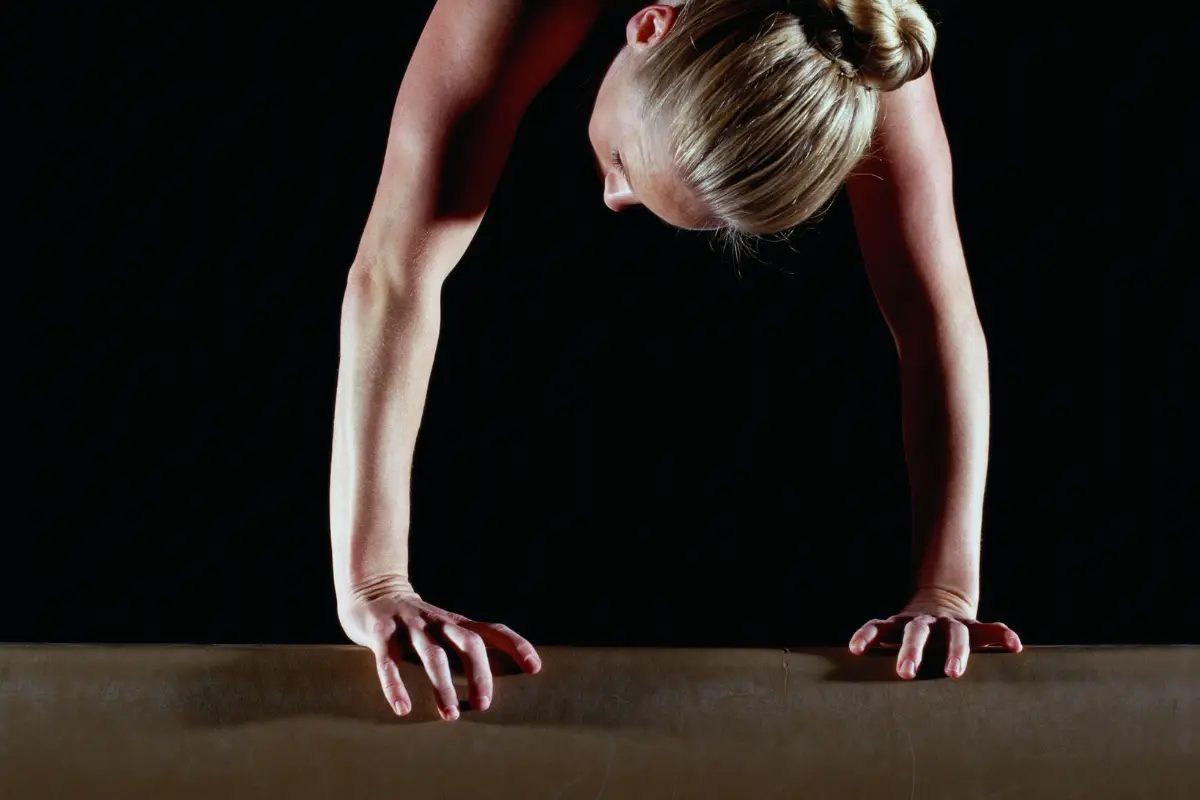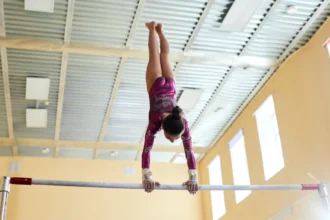Vaulting is one of gymnastics’ most electrifying events. While men and women both compete using the same modern vaulting table, there are important differences in setup that tailor the apparatus to each discipline’s needs. These adjustments ensure safety, maximize performance, and account for the biomechanical differences between male and female gymnasts.
Height: Tailored for Physique and Performance
The most notable difference is the height setting of the vaulting table:
- Men: 135 cm ± 1 cm
- Women: 125 cm ± 1 cm
That 10 cm difference may sound small, but in gymnastics, it has a huge impact. The average male gymnast is taller, with more upper-body power, while female gymnasts tend to be shorter and more compact. By adjusting the table height, gymnasts in both programs can block (push off) in an optimal body position.
gymnastics, it’s significant. The difference reflects typical variations in height, build, and power output between male and female gymnasts.
“Table height is definitely a factor. 10 cm is more than people realize when it comes to block and height.”
Why the Height Difference Matters
The reasoning behind this setup comes down to biomechanics:
- Power transfer: A higher table for men allows them to channel runway speed into greater leverage, creating explosive lift for difficult vaults.
- Technique adaptation: A slightly lower table for women matches body mechanics to their strengths, preventing over-rotation or weak blocks.
- Injury prevention: Proper setup minimizes awkward hand angles, wrist strain, and shoulder overload during impact.
This careful calibration ensures gymnasts can vault at their highest difficulty without increasing risk.
Uniform Dimensions, Variable Setup
Outside of height, the vaulting table is identical in men’s and women’s gymnastics:
- Length: 120 cm
- Width: 90 cm
The surface area remains standardized across all competitions, ensuring that hand placement and spatial references are the same regardless of category. This standardization helps judges, coaches, and athletes maintain consistency while the height difference addresses the unique demands of each discipline.
Practical Insights from Coaches
In elite competitions, the vault table is set to the official FIG heights. But in practice, coaches often adjust vault height for individual athletes, especially in women’s programs where growth stages vary widely.
- Younger gymnasts may vault at a lower setting until their technique matures.
- Taller female gymnasts sometimes train on slightly raised tables for comfort.
- In men’s programs, adjustments are less frequent since athletes tend to be closer in height by the time they specialize.
As one coach put it:
“It’s very common to move the table up and down for girls on the same team.”
This adaptability makes the vault table not only safer but also a more effective training tool.
Performance Style Differences
While the vaulting table itself is the same, the style of vaulting looks very different between men’s and women’s gymnastics.
Women’s Vaulting:
Women’s vaulting is dominated by the Yurchenko family (round-off → back handspring → salto). These vaults take advantage of the runway momentum created by the round-off, producing height and distance that support complex flips and twists. High-profile examples include the Amanar (a 2½-twist Yurchenko), the Cheng (½-on → front layout 1½ twist), and Simone Biles’ Yurchenko double pike (Biles II)—the hardest women’s vault ever performed, valued at 6.4.
Men’s Vaulting:
Men’s gymnastics shows a broader mix of vault families, with frequent use of Tsukahara and handspring entries alongside round-off entries. Male gymnasts often push into extreme territory with triple twists, double saltos, and long flight distances. Power and amplitude are emphasized, and the higher vault height allows them to convert speed into the big, dynamic vaults for which MAG is known.
Summary Table
| Aspect | Men’s Vault Table | Women’s Vault Table |
|---|---|---|
| Height | ~135 cm | ~125 cm |
| Length & Width | 120 × 90 cm (same) | 120 × 90 cm (same) |
| Reasoning | Leverage for power, height | Adapted to physique, control |
| Adjustability | Less frequent in practice | Frequent for growth & training |
| Performance Style | Variety of vault families; high power, triple twists, long flight | Yurchenko-dominant; Amanar, Cheng, Biles II |
By blending standardization with flexibility, the vaulting table ensures both men and women can perform at their best while keeping the sport as safe as possible.












